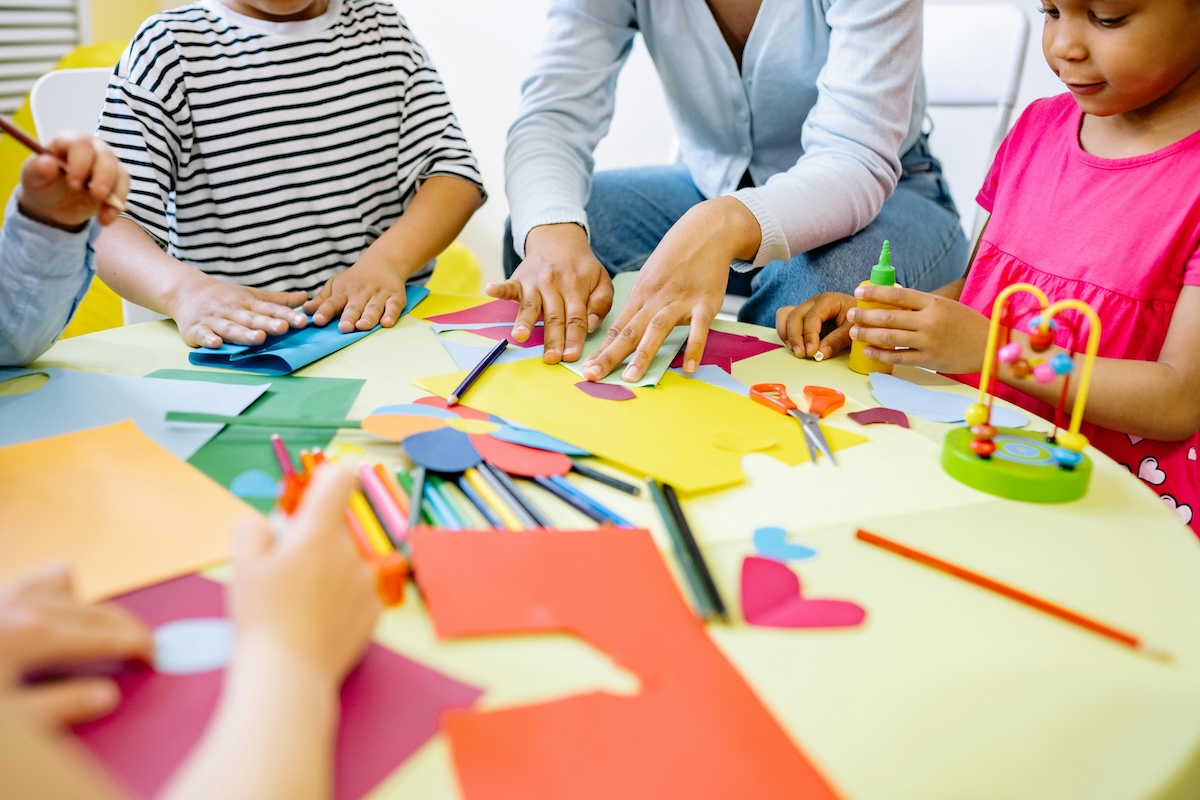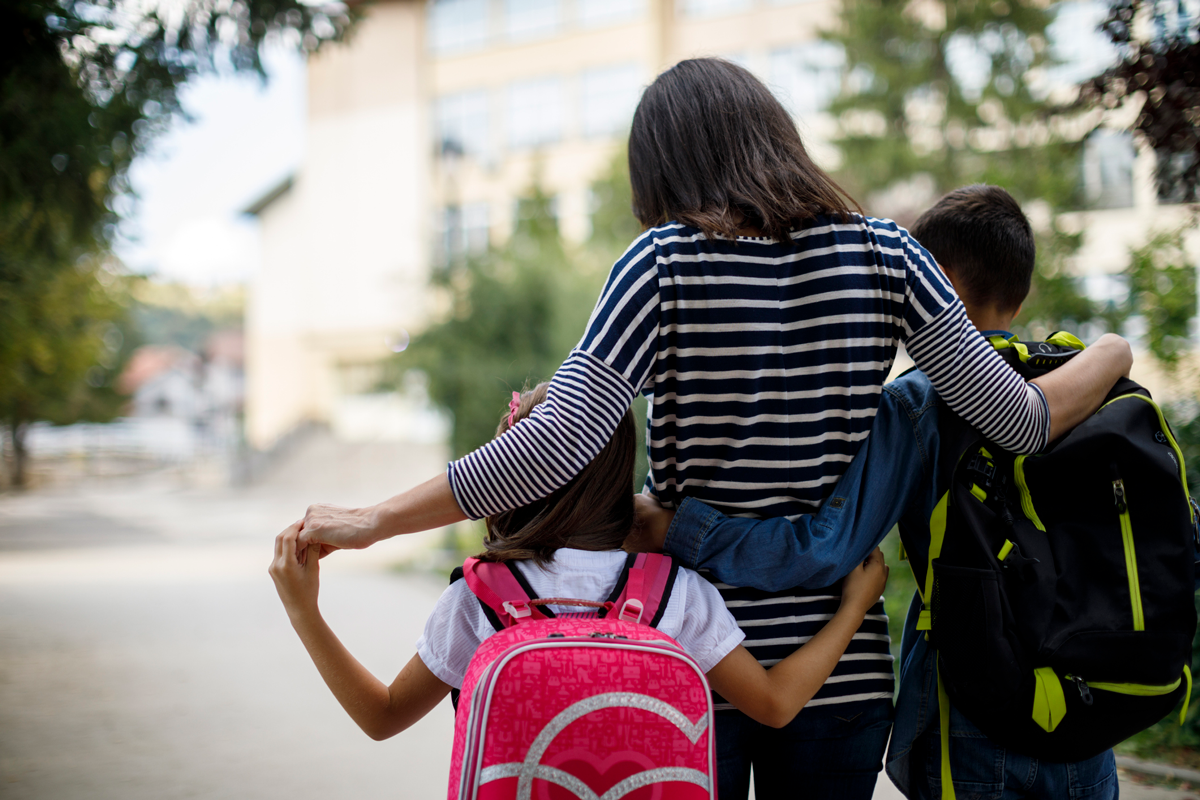If you’re a parent of a 4-year-old, you’ve likely been through a lot of the big early parenting choices — whether to breastfeed, when to start solid foods, when and how to potty train. Four can be a fairly calm time (decision-wise, anyway). But the next decision is right around the corner, and it’s a major one: school.
There are various choices associated with school. After the choice of which school, the other one that looms large for many parents is when their child should start school. In particular, parents often ask whether it makes sense to hold their child back a year and have them start kindergarten a year later. This is sometimes called “redshirting” (like in college athletics, but for 5-year-olds). The idea is that a child might be better equipped to excel in school if they are older when they start.
Should you consider this? Are there pros and cons? What does the data say?
What does it mean to redshirt?
Most children enter kindergarten in the fall after they turn 5 (some school districts do this differently, but the most common setup is that a child enters the September after they turn 5). This entry process means that some children — those born in October — are almost 6 when they start school. Other children in the same class — those born in August — are only just 5.
There is a large difference, on average, between an almost-6- and just-5-year-old. That’s an important year for developing maturity and focus (and size!). Some parents are concerned that their children will be at a disadvantage if they enter when they are on the younger side. This leads some to the conclusion that they should hold their child back.

In practice, this mostly happens with children who have summer birthdays, so would be the youngest in the class. It’s also more common with boys than girls, for reasons I’ll discuss below. That means that this is probably relevant only for the set of children born in the summer. But that group is large enough that kindergarten entry ages have risen noticeably over time. In 1968, nearly all children age 6 were in first grade. By 2005, this was only about 80% (with the rest in kindergarten). There are reasons to think this trend has continued.
Redshirting is not possible in all school districts. Some (like New York City) have put strong restrictions on this behavior and attempted to enforce on-time school entry. In other districts or schools, it has become extremely common. Some private schools, for example, delay entry for children with a summer birthday by default.
The answer to whether you should consider this as a parent, then, is twofold. First, this is likely a consideration only if you have a child with a summer birthday. Second, it’s a consideration only if it is possible in your school or district to make either choice.
If you find yourself there, the follow-up is whether this is a good idea and for which kids.
What are the benefits of redshirting?
Why might you choose to do this? To answer that, we would like to be able to look at data on how children do if they enter school earlier or later.
This isn’t an easy question to answer. For one thing, when we look at outcomes for children, research nearly always focuses on “doing better” as measured by test scores. There’s a lot beyond test scores, though, and these outcomes will be largely unreachable with data. But even on the test scores, it’s not easy to answer the question of whether redshirting matters.
Consider a simple approach of comparing test scores for children who enter school at 5 years old with those who enter at 6. This has a basic problem. Parents are choosing — at least in some cases — the time of entry based on other things they know about their child. Children who are academically stronger may be entered younger; those with more resources may be more likely to wait a year for school, because they have the resources to afford another year of child care. The actual age of school entry isn’t random, and it’s hard to learn from this simple comparison.
This problem has a solution. Rather than use the age kids actually enter school, you can use the age they should have entered. If a district has a September 1 cutoff, a child born August 1 is supposed to enter school at a younger age than one born April 1. It’s true, of course, that some of the August-birthday children are held back, but as long as the average age of entry for August birthdays is younger than the average age for April birthdays, this will be informative.
Using this approach, researchers see that, on average, kids who enter school at younger ages have slightly worse test scores than their peers in the same grade. And according to a 2009 paper, they are more likely to repeat an early grade (kindergarten, first, or second).
Children with early school entry are also more likely to be diagnosed with learning disabilities. In that same paper, researchers showed that being a year younger at school entry increased the chance of being diagnosed with ADHD from 4.1% to 7%. This is not saying that kids who enter school earlier are predisposed to ADHD but, instead, that the fact that they entered younger increased their chance of diagnosis.
One possible interpretation of this is that younger kids are less able to sit still, and adults naturally compare kids with the other students in their class. If a child is the youngest kid in the class, their age-appropriate inability to sit still as compared with their older peers may be interpreted as hyperactivity. This mechanism is consistent with the fact that when a child’s class cohort is (randomly) older, the effects are larger.
It is important to say that there should be no shame or stigma in learning disabilities. Early recognition can lead to better, faster, more effective treatment. Kids who might otherwise have struggled are enormously helped by therapy and medication. That’s all great! But overdiagnosis driven by school entry age may be a cause for concern.
To summarize: The primary benefit of holding a child back (in the data) seems to be a lower risk of behavioral diagnosis driven by situational factors.
What are the downsides of redshirting?
If your kid is ready for kindergarten, the downside of redshirting is that it’s holding them back from their obvious next step. For most kids, entering kindergarten at the standard time is the right choice.
In the case where you think that redshirting might fit your child, there are still a couple of downsides to consider. One is that they will be older when they finish school. This isn’t obviously a downside, but it’s worth considering the other end of the school timing, just so you have thought it through.
The other, more immediate, downside is that child care is often more expensive and complex than kindergarten. Figuring out what to do with your child for another year may not be straightforward, and even if you have a solution, it could be expensive. There are also possible family dynamics — if holding a child back would put them in the same grade as a younger sibling, that may not work well.
But how do I know what to do?
You’ll never have certainty about a big decision like this — frustrating but true. All you can do is make the best choice with the information you have.
Given all the data above, the primary consideration should likely be whether you think your child is ready for the behavioral expectations of kindergarten. This is much more important than the academic expectations, because when we see downsides to being younger in the classroom, they seem to be about behavior, not academic achievement.
You can learn about this by observing your child, by asking their pre-K teachers, and by getting a sense of the kindergarten classroom they would be headed into. Some schools have a more academic kindergarten, some have less; that should play a role in your decision.
A final thing to remember is that this decision is one you can revisit. If your child goes to school and it isn’t working, you can hold them back for a year. It’s not necessarily easy, but kids are more resilient than we often give them credit for.
Should redshirting even be allowed?
A closing thought: Allowing redshirting in a school district has the potential to lead to what economists call “unraveling.” If every child with a summer birthday enters a year late, then the class is older on average. The expectations for behavior may increase; now the kids with a spring birthday are on the too-young side. So maybe they’ll start to wait too. Pretty soon, kids are entering kindergarten at the age of 10 (not really! But you get the idea).
This phenomenon is a concern especially because the expense of child care means redshirting is much more common among richer parents. This puts poorer kids at a disadvantage from day one.
For that reason, at least some school districts have eliminated redshirting completely or allowed it only in very particular circumstances. This may limit your options as a parent, but it can also level the playing field for everyone.
The bottom line
- Redshirting refers to holding your child back from kindergarten a year and having them start a year later. The idea is that a child might be better equipped to excel in school if they are older when they start.
- Children who start school at a younger age tend to have slightly lower test scores, a higher likelihood of repeating grades, and a greater chance of being diagnosed with learning disabilities like ADHD. However, if your kid is ready for kindergarten, the downside of redshirting is that it’s holding them back from their obvious next step. For most kids, entering kindergarten at the standard time is the right choice.
- The primary consideration should be whether you think your child is ready for the behavioral expectations of kindergarten.




















Log in
“It’s also more common with boys than girls, for reasons I’ll discuss below.”
I didn’t see the discussion below specifically about boys and girls. Did I miss something?
My parents red-shirted me as a girl with an early May birthday. I still feel resentment about the decision. I was academically advanced and frequently bored in school. I was also the first girl in my class to start puberty and got teased.
Thank you for sharing! I usually think of physically maturing as an advantage (like being bigger/stronger in sports) and not how it can be harmful.
Our state has an Oct 15 cutoff so my mid Sept kid entered at age 4, almost 5. I’m so glad we moved to somewhere where he could start at age 4, as he is already SO BORED with the easy pace of school even being one of the youngest. I can’t imagine his starting a year later.
What about the case Richard Reeves makes? Any evidence on later in life impacts one way or the other (social, emotional, life satisfaction, etc.)?
One of the arguments I’ve heard against redshirting is kids get bored and can have behavioral issues as a result — is there any evidence supporting this?
We’re making this decision for my July birthday boy and are still feeling rather confused about what evidence is out there/what the data says.
I’m struggling with the same decision with my little boy who has late-June birthday. Less worried about his smaller size at this age but concerned about his potential developmental gap when he reaches the adolescent years.
I think an important aspect when considering the historical trends is the age at which children are taught to read. When I went to half-day kindergarten in the 90s, we just played and learned to be in school. Now, students are supposed to master reading and more academic subjects, so more parents are redshirting. Perhaps we can walk this back by making full-day kindergarten an intro to school again. This move to early reading hasn’t necessarily solved the achievement gap, and it may have created a new one with wealthier parents redshirting kids.
As an educator, I both agree and disagree. It’s more about reframing how we teach reading so it’s more about phonemic awareness, playing games with rhyming words, and language skills than completing worksheets. And, there was hope at some point that the gains shown in fun and interactive early education would lead to reconsidering older grades. Instead, we seem to be pushing the lecture style of college younger and younger.
This gets even trickier in Denver, CO, where the cutoff date is October 1st! So my toddler born September 27th, which normally would be no question starting after 5yo, could actually be 4yo for the first 2 months of kindergarten. Thanks to this article, we are just going to have to see where he is behaviorally before deciding.
Similar comment to the one regarding California’s TK. Our school district in Missouri has half-day pre-K for 4yo, full-day “kinder academy” for 5yo, and presumably starts kindergarten for 6yo unless they can test into first grade? I’m still trying to figure it out but I’m curious about any data on this because it seems like institutionalized redshirting. I am hoping my 4yo with a January birthday can go straight to this kinder academy because her daycare/preschool teachers say she’s advanced for her age and I anticipate she might get bored in school if she’s turning 8 halfway through first grade (assuming we’re forced to start pre-K this fall and also do kinder academy AND kindergarten before 1st grade).
This is all very interesting. I have a somewhat related data question that I am struggling with for my child who will turn 4 in a month. California has gradually rolled out universal TK (transitional kindergarten). This year will be the first year it is fully rolled out (anyone who is 4 by September 1 is eligible). It is essentially another year of kindergarten though more play-based. It is guaranteed for everyone who applies regardless of income (not like public pre-k models in many other states and historically in CA). At least where I live, it is at the same elementary school where my child would then go through 5th grade. Has there been any studies of this type of universal pre-k/TK for four-year-olds? I know there is some data on pre-k where it’s income-based but that seems to me to have many confounding variables; most of the people i know considering TK here, including me, COULD afford another year of preschool and are just trying to figure out what’s best for their kid.
I’m struggling to understand the difference between Pre-K and TK.It seems like it’s just about whether it is free or paid. As an educator who transitioned to editing and has worked on K programs, one of the hardest things is knowing that some students are starting K with no prior knowledge and others went to PK and already know all of their letters and sounds. Universal PreK/TK helps prevent kids from starting K ahead/behind. There will always be individual differences, but they are not as vast when children are given more equitable opportunities as early as possible.
The one thing I read that was anti-early schooling is that students in certain programs start K in a good place, but are basically burnt out on paperwork by G2 or G3 and start to do worse than their peers. That’s why it’s important that programs are fun and age-appropriate. I also think I saw an article posted about that here somewhere, but haven’t read it yet.
Whichever route you choose is likely fine, but you may want to sit on on a class or two to see if it matches the style you want for your child.
Maybe this article will help: https://parentdata.org/does-pre-k-really-hurt-future-test-scores/